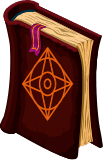
To say that Pokémon is a phenomenon is a bit of an understatement. The brand swept the world in the late 90’s, and now it’s evolved into a cultural icon. However, it’s not just the video games or the television shows that drive its popularity – it’s also the trading cards! Continue reading below as we take a closer look at the history of the Pokémon Trading Card Game (TCG) and how it’s grown from humble beginnings into a true global sensation.
The Origins
In 1996, Pokémon was created by Satoshi Tajiri and Ken Sugimori, and little did they know they were cooking up a charismatic universe that would capture the hearts of fans worldwide. In addition to the first pair of video games, the first set of cards, referred to as the “Base set,” was released in Japan initially, before it made its way to the United States in 1998. This set featured all of the original 151 Pokémon, many of which are still popular today like Pikachu, Mew, and Charizard.
It wasn’t long before demand skyrocketed, and Wizards of the Coast, the company that published the cards in the US, struggled to keep pace. Nonetheless, cards still found their way into the hands of fans, and ever since, Pokémon has released at least one new set of cards each year—with over 80 total.
Pokémon Cards Today
In recent years, the Pokémon TCG has experienced a bit of a renaissance, and fueled by nostalgia and innovative gameplay, as well as the introduction of online platforms, it’s now more exciting and easier than ever before to collect, trade, and play the game! There are now several hundred more Pokémon than there were in the 90s, meaning that there are plenty of cards to collect, as well as many varieties of some of your older favorites.
Tips for Identifying Rare Pokémon Cards
If you’re already a card collector, or if you’re ready to dive into the hobby for the first time, it’s always helpful to know what to be on the lookout for! Here are a few must-know tips for identifying uncommon and rare Pokémon cards:
- Holographic Shine – Rare cards often feature holographic foil patterns that shine brightly when tilted under light. Most booster packs contain at least one of these treasures.
- First Edition Stamp – Cards marked with a “First Edition” stamp are often highly sought after by collectors; this mark is often in the lower left corner.
- Alternative Artwork – Some rare cards boast unique artwork or special editions, making them stand out from the rest.
- Error Cards – Believe it or not, cards that were printed and disturbed with obvious errors such as misprints can sometimes be valuable.
The history of Pokémon cards is a testament to the power of imagination, but as we look to the future, one thing is certain – the journey is far from over!
About Bricks and Boards Plus
Here at Bricks & Boards Plus, we’re proud to offer one of the most impressive selections of Pokémon cards in Dawsonville. Whether you’re hoping to add to your collection or trade and sell a few of your rare pulls, we’d be more than happy to help. If you have any questions about the blog or you’d like to request additional information, you can visit our website or call us today for more information. We can’t wait to hear from you! Telephone: (706) 203-1378.





